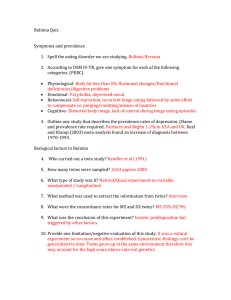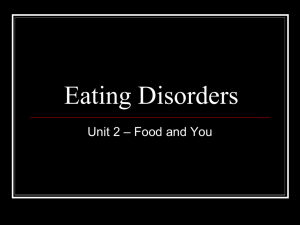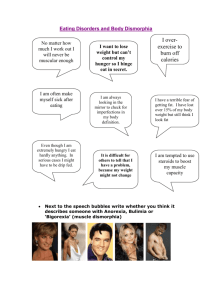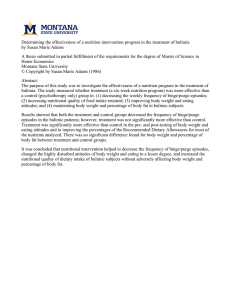Eating
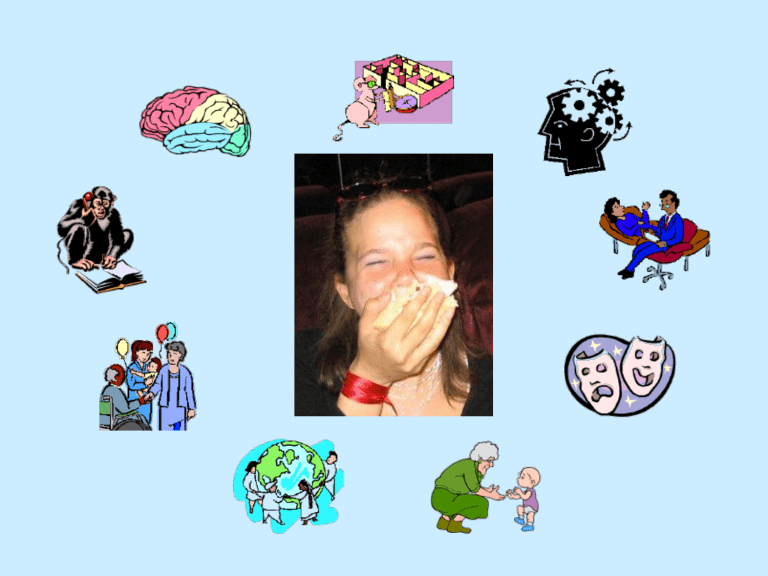
Eating and The Case of Bulimia
Objectives:
1.
To introduce eating and its disorders as topics in psychological science
2.
To demonstrate the complexity of eating and thus the necessity of using many approaches to study it
3.
To illustrate how studying eating in other animals can help us understand eating in our species.
Cognitive: What we think, perceive, and pay attention to affects how we feel and what we do. People with bulimia often are preoccupied with dieting; when they fail to restrain their eating and binge, they experience a depressing sense of losing control that motivates them to purge and fuels the binge-purge cycle.
Learning: In many species, learned connections between sights, sounds, and smells affect eating behavior. In people with bulimia, the sight and smell of favorite binge foods triggers learned bodily responses that increase the likelihood of a binge.
Neuroscience: Brain chemistry and hormones influence what, when and how much animals eat. For instance, activating a specific part of a rat’s brain can turn eating “on” and “off.” The brains of people with bulimia function differently from others in some ways.
Evolutionary: For millions of years, a problem for many animals has been getting enough to eat. Many animals, including humans, have adapted by filling up in times of plenty, so that they can last through a drought or famine.
Bulimia may partly reflect an evolved tendency to binge after fasting and the fast after bingeing.
Sociocultural: Our thoughts, emotions, and behavior are affected by culture and the people close to us. In
Western cultures, media and family influences make many women want to be thin and to be dissatisfied with their bodies. Women with bulimia are especially preoccupied with their body shape.
Developmental: Thoughts, feelings, and behaviors change over the lifespan. Important changes in bodies and social lives occur in all social mammals around puberty. Girls entering puberty start to develop physically and to care more about being attractive; these changes increase the risk of developing bulimia.
Individual Differences: People exposed to similar sociocultural influences can be affected differently, due to inherited tendencies and experiences earlier in life.
People with a family history of depression or alcoholism are at higher risk of developing bulimia than are other people in the same culture.
Clinical: Research in clinical psychology helps us to understand, treat, and prevent psychological disorders. Therapies that combine changes in thinking with changes in behavior patterns – cognitive-behavioral therapy – can help people with bulimia feel better and form healthier eating habits.
Related Readings
Pinel, J. P. J., Assanand, S., & Lehman, D. R. (2000).
Hunger, eating, and ill health. American
Psychologist, 55(10), 1105-1116.
Rozin, P. (1996). Towards a psychology of food and eating: From motivation to module to model to marker, morality, meaning, and metaphor. Current
Directions in Psychological Science, 5(1), 18-24.
Striegel-Moore, R. H., Silberstein, L. R., & Rodin, J.
(1986). Toward an understanding of risk factors for bulimia. American Psychologist, 41(3), 246-263.
